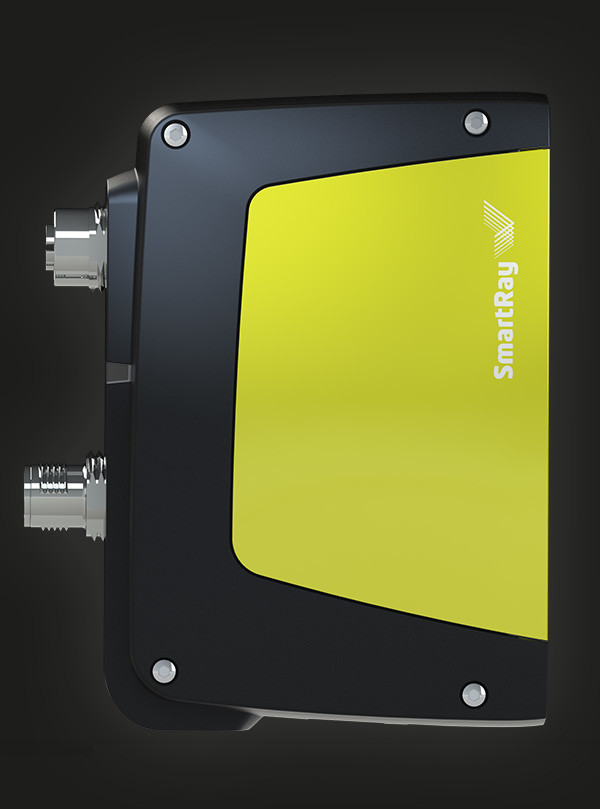ECCO 75: High definition sensors open up range of new 3D applications
Our new ECCO 75 Series have pushed the limits of 3D Sensor technology in so many areas. They can identify smaller defects, make more precise measurements, scan bigger objects and inspect shiny parts on any high speed production line.

Properties & Benefits
| Typical field of view (near | mid | far ) 1 | 34 | 36 | 38 mm |
|---|---|
| Measurement range 1 | 16 mm |
| Stand-off distance | 60 mm |
| Typical vertical resolution (Z) 1 | 1.4 µm – 1.8 µm |
| Typical lateral resolution (Y) 1 | 18 µm – 20 µm |
| Z-Linearity 2, 5 | 0.01% (0.1 µm/mm) |
| Z-Repeatability 4, 5 | 0.1 µm |
| Weight | Approx. 480 g |
| Part number | 3.002.121 |

| Maximum points / 3D profile | 1920 |
|---|---|
| Typical scan rate 3 | Approx. from 150 Hz up to 4 kHz |
| Typical 3D point rate 3 | Approx. from 0.3 up to 7.6 million points/sec |
| Interface | Gigabit Ethernet ( 1 Gbit/ sec) |
| Inputs | 4 x Inputs, 5 – 24 VDC Quadrature Encoder (AB-Channel, RS-422 Standard) |
| Outputs | 2 x Outputs, 24 VDC |
| Trigger | START Trigger support on Input 1 – 4 DATA Trigger support on Quadrature Encoder Input (Max. DATA trigger rate: 100 kHz) DATA Trigger support on Input 2, 3 (Max. DATA trigger rate: 10 kHz) |
| Input voltage | Power | 24 VDC, ± 15 % ripple | 7.5 W |
| Laser wavelength | 660 nm |
| Laser class (standard | optional) | 2M | 3R |
| Maximum ambient light | 10,000 lx |
| EMC test | as per EN 61 000-6-2, EN 61 000-6-4 |
| Vibration/ Shock test | as per EN 60 086-2-6, -27, -29, -64 |
| Electrical safety | as per EN 61 010-1-3 |
| Protection class | III, as per EN 61 040-3 |
| Enclosure rating | IP65 |
| Air humidity | Maximum 90%, non-condensing |
| Temperature (operation | storage) | 0 – 40° C | -20 – 70° C |
| Compatible accessories | Power-I/O-Encoder cable: 6.320.0XX Ethernet cable: 6.303.0XX |
(1) Typical values can vary up to 5% due to optical tolerances
(2) Z-Linearity calculated as a variation of “bias” (reference value vs. measured value) over the measurement range. The %slope of a best-fit (regression) line from a plot of bias over measurement range represents Z-Linearity
(3) Scan rate & point rate are dependent on the configured field of view, measurement range and exposure time. The typical scan/point rate has been estimated with an exposure time of 1 µsec
(4) Experimentally asessed by scanning a measurement target moving over a conveyor belt 50 times. Measurement perfomed by averaging height values within the Z-Map image. No post-processing filters applied
(5) Measurements performed on a SmartRay standard artifact which is an aluminium flat matt surface painted matte white




